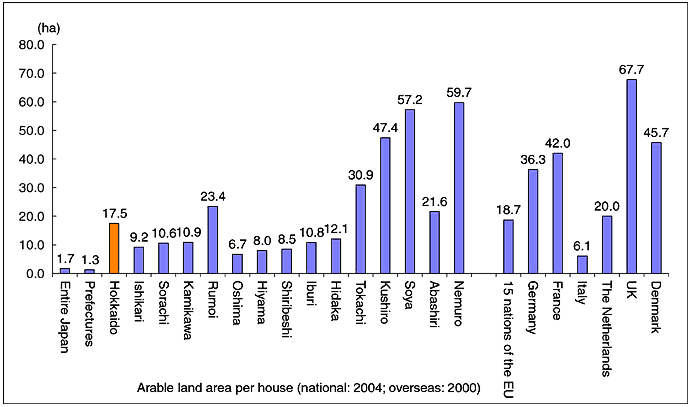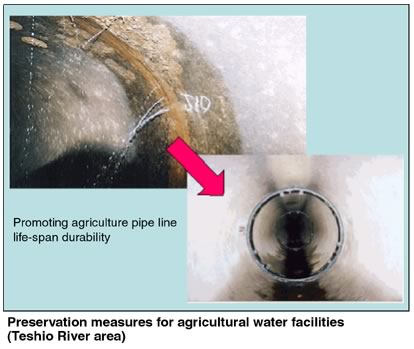Hokkaido Bureau
Development of Agriculture and Farm Villages
Strengthening Hokkaido's role as a food base ・ Pioneering the construction of a recycling society with a safe and secure diet lifestyle ・ Building Hokkaido pastoral communities ・ Promoting reform of the agricultural structure ・ Realizing a secure nation and safe livelihood
From this point on, while strengthening Hokkaido's role as a food base for Japan, based on this master plan the focus will be placed on a variety of factors including natural cyclical functions and the preservation of national land and rural environments which agriculture has had from the beginning, and even more important, revitalizing farm villages to support these.
For these reasons, the new plan promotes ensuring water resources for agricultural use, farmland development, advanced development of agriculture and farm villages and environmental improvement.
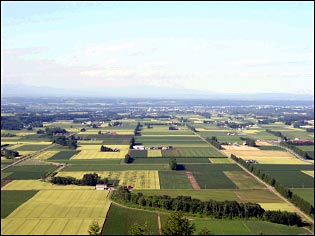
Vast upland farming area (Tokachi area)
Principal roles are the following:
| · | Stable, safe supply of low-cost food and realization of healthy eating habits by producing agricultural products adapted to consumer needs |
| · | Contribution to revitalization of the economy by developing agriculture related industries |
| · | Maintenance or formation of vitalized communities by improving the living environment of farm village areas and promoting co-existence and convective flow between urban and farm areas. |
| · | Contribution to water use by leveling land and using local surface water |
| · | Making great contribution to a number of functions such as preventing floods and soil erosion, incrementing water resources by developing anti-disaster dams, agricultural drainage facilities and developing paddy land. |
[Development of Agriculture and Farm Village Development Projects in Hokkaido]
Emphasizing the importance of increasing the efficiency of a budget for agriculture and farm village development projects, effort is being made to thoroughly implement time management policy connected with a public works reform policy for achieving strict assessment of the project, comprehensive cost reduction, participation of residents, mutual alliance of projects, efficient use of existing social stock, etc.
| (1) | Agricultural infrastructure development project The agricultural infrastructure development project strengthens and stabilizes the agriculture management base and rearranges the agriculture production structure by improving agriculture productivity and promoting agriculture structure reform. |
|
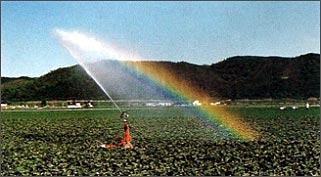
Dry Field Irrigation
| (2) | Farm village development project While developing farm village living environment, the project plans to preserve and create a natural environment that will result in revitalized, rich farm village areas. |
|
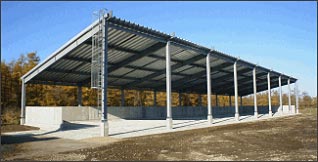
Compost Facilities
| (3) | Farmland maintenance and management project With regard to farmland and agriculture facilities, pro-active prevention and recovery of functions from various kinds of disaster have been conducted as well as the recovery of good management and maintenance of agriculture facilities. |
| Disaster prevention measures For the recovery farmland and agriculture facility functions and also for proactive prevention of disaster the plan implements the construction of disaster prevention dams, repair of reservoirs and river structures for agriculture, measures to prevent landslides and other disasters caused by the nature of the soil, etc. | |
| Maintenance and management of the agriculture facilities As for agriculture facilities, function facilities are maintained appropriately to extend their life, preventive maintenance is conducted at optimum times and pro-active preservation and appropriate maintenance management is conducted. |
